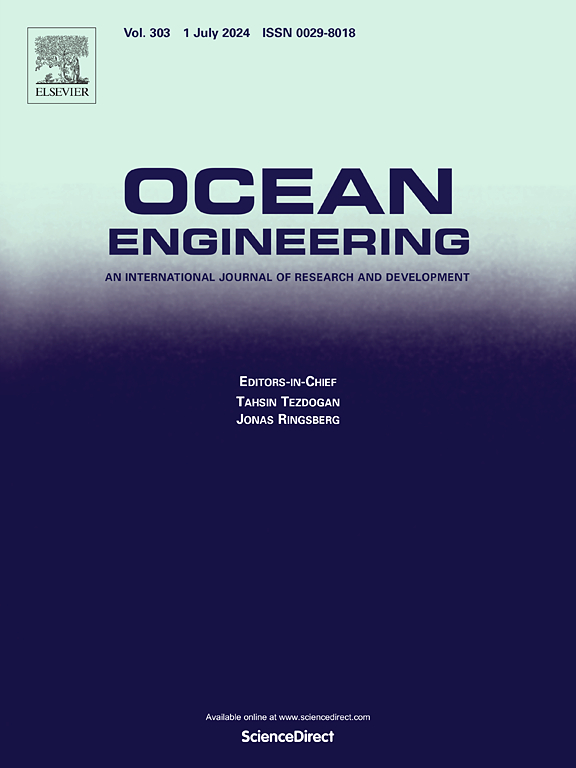复合材料大直径圆柱形防波堤与极端波浪相互作用的实验与数值研究
IF 5.5
2区 工程技术
Q1 ENGINEERING, CIVIL
引用次数: 0
摘要
大直径圆柱体在近海围堰中的广泛应用凸显了其作为防波堤结构的潜力。了解大直径圆柱形防波堤的波浪衰减特性是进一步应用的基础。现有的研究主要集中在小直径圆柱形防波堤和非极端波浪条件下。为此,提出了一种新型的大直径圆柱形防波堤(CLCB),该防波堤将侧板、顶壁和围板集成为大直径圆柱体。对CLCB在极端波浪条件下的水力性能进行了一组波浪水槽试验。通过一系列的模型验证,揭示了所建立的数值模型的可靠性。综合分析了不同结构参数对波衰减性能的影响。仿真结果表明,增加侧板和顶壁高度可以显著降低波透射系数,而改变机坪高度对波透射系数的影响有限。在本研究使用的参数范围内,CLCB在极端波条件下表现出优越的波衰减性能,优于非极端波环境。研究结果优化了大直径圆柱形防波堤的设计,对大直径圆柱形防波堤与极端波浪的相互作用有了新的认识。本文章由计算机程序翻译,如有差异,请以英文原文为准。
Experimental and numerical investigation of the interaction between extreme waves and composite large-diameter cylindrical breakwater
The widespread application of large-diameter cylinders in offshore cofferdams highlights their potential as breakwater structures. Understanding the wave attenuation characteristics of large-diameter cylindrical breakwaters is fundamental to further applications. Existing studies are mainly focusing on small-diameter cylindrical breakwaters and non-extreme wave conditions. Hence, a novel large-diameter cylindrical breakwater (CLCB) is proposed by integrating the side plate, crown wall and apron into large-diameter cylinders. A set of wave flume experiments on the hydraulic performance of CLCB under extreme wave conditions were conducted. The reliability of the developed numerical model is revealed based on a series of model validations. A comprehensive analysis is conducted to investigate the effects of different structure parameters on wave attenuation performance. The simulation results indicate that increasing the height of the side plate and crown wall could significantly decrease the wave transmission coefficient, while variations in apron height have a limited influence. Within the parameters utilized in this investigation, CLCB demonstrates superior wave attenuation performance under extreme wave conditions, better than that under non-extreme wave environments. The results from this study optimize the design of large-diameter cylindrical breakwaters and generate new insights into the interaction between large-diameter cylindrical breakwaters and extreme waves.
求助全文
通过发布文献求助,成功后即可免费获取论文全文。
去求助
来源期刊

Ocean Engineering
工程技术-工程:大洋
CiteScore
7.30
自引率
34.00%
发文量
2379
审稿时长
8.1 months
期刊介绍:
Ocean Engineering provides a medium for the publication of original research and development work in the field of ocean engineering. Ocean Engineering seeks papers in the following topics.
 求助内容:
求助内容: 应助结果提醒方式:
应助结果提醒方式:


